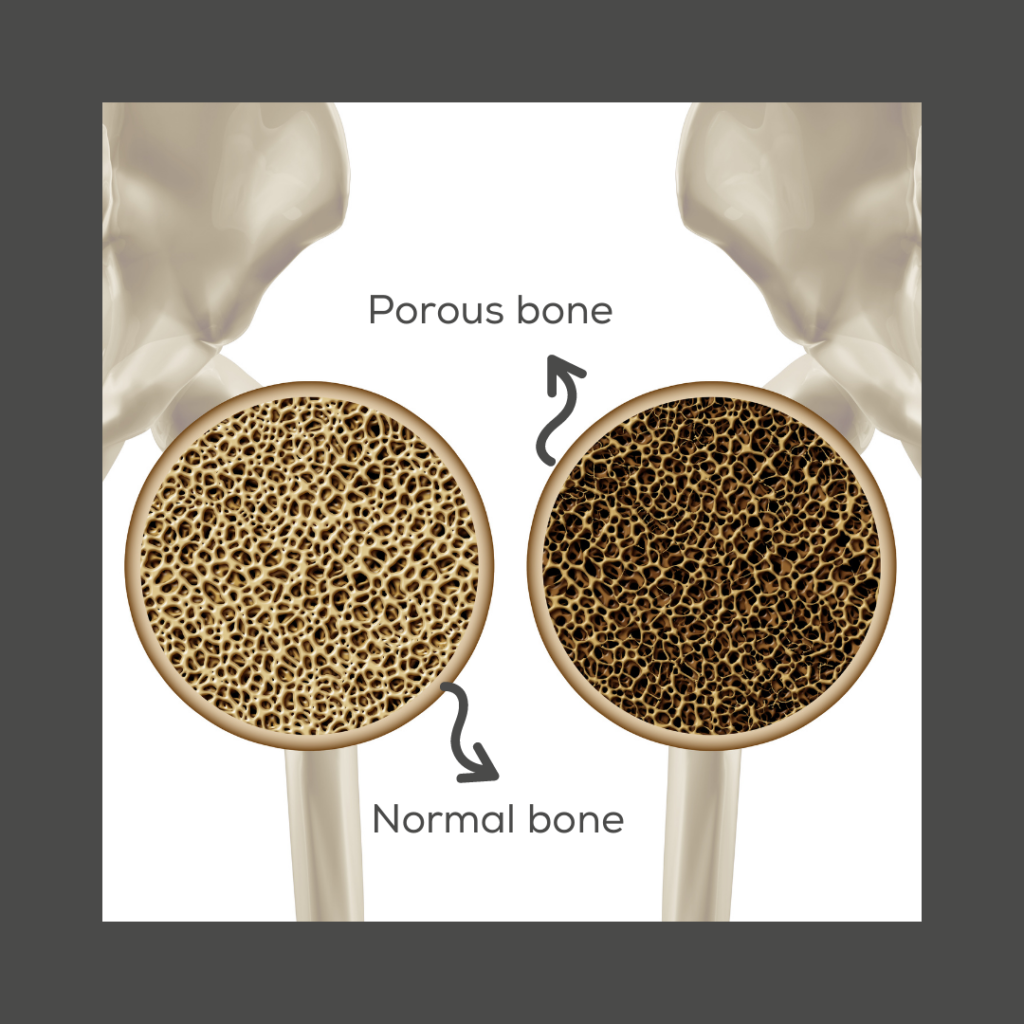Online Osteoporosis
Clinic
What is Osteoporosis?
Osteoporosis is a health condition that weakens bones, making them fragile and more likely to break. It develops slowly over several years and is often only diagnosed when a fall or sudden impact causes a bone to break (fracture).
Factors that could increase the risk of developing
Osteoporosis
Ethnicity
Whites and Asians are at higher risk, although both men and women of all ethnicities can be affected.
Sex
Women are at higher risk of developing osteoporosis, especially after menopause when their hormone levels drop.
Body frame
Lower BMI (body mass index) and smaller frames tend to have a higher risk of developing osteoporosis. This can be due to the genetic makeup of a person or secondary to an eating disorder. Family history: having a parent or sibling with osteoporosis put us at higher risk, especially if our mother or father suffered a fractured hip.
Age
The older we get, the balance between bone formation and break down can be disturbed due to a number of reasons including the process of ageing itself as well as a result of a chronic disease or medications.
Lifestyle
Smoking, excessive alcohol consumption, inactivity and unhealthy diet puts us at increased risk of developing osteoporosis.
Medical conditions and medications
Some medical conditions like celiac disease, IBD (inflammatory bowel disease), cancer, rheumatoid arthritis plus treatments which are used to treat conditions like cancer, gastric reflux, seizures and transplant rejection can also contribute to development of osteoporosis.

Prevention & Treatment of Osteoporosis
We know that progesterone helps make new bone and oestrogen helps reduce the break-down of bone. Additionally, testosterone makes the bonds between bone cells stronger. This is why a woman who has considerably less hormones after her menopause is at a higher risk of developing osteoporosis.
Men also have an increased risk of developing osteoporosis as they age, but the reduction in their testosterone levels is more gradual and therefore their risk is less frequent. Thyroid levels are also important players in our bone health and strength. Too much thyroid hormone can result in osteoporosis.
Hormone replacement therapy (HRT) : replacing estrogen, progesterone and testosterone in peri-menopausal and menopausal women can prevent and/or reduce their risks of developing osteoporosis. Currently, there is no data to suggest what level of blood hormones we should aim for, but we know that replacing hormones in women who either have a strong family history of osteoporosis or are at higher risk of developing this condition protects against it.
Nutritional Recommendations
- Calcium-rich foods: dairy products (particularly kefir, which has the added advantage of being a probiotic), green vegetables (such as broccoli, kale, and collard greens), sardines and soybeans.
- Vitamin K-rich foods: beef liver, chicken meat, cheese and natto (fermented soybeans) are rich in vitamin K2 (the type of vitamin K that has a more significant role in bone health).
- Vitamin D-rich foods: oily fish, egg yolks and whole milk, and do not forget to spend time outdoors as the sun is our main source of vitamin D as the body makes vitamin D from direct sunlight.

Prevention & Treatment of Osteoporosis

Bone health and exercise go hand in hand, as exercise slows down the rate of bone loss and increases bone density. Try jogging, dancing, climbing, tennis, star jumping or your favourite aerobics class at the gym. Alternatively, brisk walking (ideally in nature for an extra boost of vitamin D) is a great lower impact option – these are weight bearing exercises and are known to improve bone mass density. Combine with resistance exercises, such as weight lifting or elastic resistance bands, to improve bone strength and complement with yoga or Pilates to improve flexibility and posture. Mix and match the 3 types of exercise on a weekly basis, aiming for a minimum of 30 minutes exercise daily.
Whatever new exercise you take on board, talk to your health practitioner to make sure it is right for you, particularly if you have had a diagnosis of osteoporosis or any broken bone in the past.
